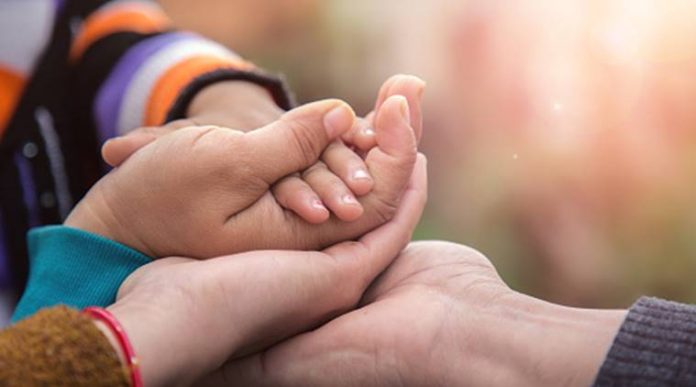This article is written by Udita Prakash, a student at UPES, Dehradun pursuing BBA LLB(Hons.). This article deals with the adoption laws in Russia.
Table of Contents
Introduction
Adoption is when an adult legally assumes the role of determining a young child. Adoptions arise for many reasons, including when the young child’s biological mother and father are unable or unwilling to care for their child, when the biological mother and father have passed away, or when one of the biological parents is re-established by marrying another partner wanting to anticipate parental authority. Adoption can take over the area through numerous methods, starting from adoption through an organization that places children with adoptive mother and father, impartial adoption through an agreement between the adoptive and biological mother and father, or the adoption of a small child from some other country.
History of adoption in Russia
American people adopting in Russia began to take place in the early 1990s. Over the years, the adoption process in Russia has undergone many changes, but that didn’t stop it from quickly becoming an adoption destination for countless adoptive families. Towards the turn of the century, a significant part of international adoptions took place in Russia.
1999-2011
Entering the 21st century, Russia was consistently one of the most popular countries for American families to choose for adoption. Starting in 2008, a combination of factors, including new regulations, caused adoption in Russia to begin to decline. However, until 2011, US citizens adopted up to 1,000 or more Russian children every year.
2011-2013
Beginning in 2011, accounts of unfavorable adoption situations began to emerge, some of which involved adopted Russian children. Many Russian adoptees had particular needs, but due to the lack of medical information, the adoptive parents were unprepared for them. This resulted in a variety of problems that led to more limitations on adoption and an emphasis on domestic adoptions. In late 2012, families reported significant delays and difficulties in completing their adoptions.
2013-Present
In early 2013, Russia issued Federal Law No. 272-FZ, which prohibited the US citizens from adopting Russian children. In their explanation, they cited concerns for the welfare of the adopted children. After the ban, many adoptions that were in progress were never completed.
Adoption laws in Russia
According to the Russian Adoption Regulations, the courtroom judges within the area where the children were approved adoptions. The judge’s selection is based primarily on an overview of the numerous files within the case and a closed listening that generally lasts about an hour. The adoptive mother and father are required by regulation to await listening. Sometimes, the judges are content to renounce the presence of a certain person while there are compelling clinical or private reasons for the request. In some regions, a worker from the commercial adoption company may also serve as the mother and father in listening.
According to many parents, the court hearing was thorough, professional, and friendly. Many describe it as one of the most moving and memorable elements of their adoption experience. Although the judge issues a decision on the day of the hearing, the sentence takes another ten days to go into effect. Appeals are possible during this time. In fact, many judges waive the 10 days waiting period. However, this is entirely up to the judge and depends to some extent on the region.
Procedure of adoption
To start the adoption process, parents request the Ministry of Education of the Russian Federation about the children available for adoption. They can make specific requests for the type of child they want to adopt (eg., age, gender, disabilities, sibling groups). Parents can also receive information about children from the Central Data Bank of the Federal Ministry of Education. When parents identify an orphan they want to adopt, they submit a formal adoption request to the court where the child lives. The following documents must accompany the application:
- the couple’s marriage license. If they are not married, the adoptive father presents his birth certificate;
- recent medical reports on the health of the future parents;
- a certificate from their employer(s), verifying their job title;
- a statement of income;
- evidence that the future parents have permanent housing;
- the results of a housing study carried out by state authorities.
Local child welfare representatives present the following:
- the child’s birth certificate;
- a medical report;
- documents confirming that the child is in the Central Bank of Orphan Data and that no Russian citizen applied to adopt the child;
- a statement from the local authorities that adoption is in the best interest of the child;
- if the child is over 10 years old, a declaration of his/her consent to the adoption;
- if the child is under 10 years of age, a statement from his/her biological parents agreeing to the adoption, or documents explaining why parental consent is necessary;
- consent of the director of the institution where the child lives.
Once the judge’s decision takes effect, the new parents receive parental authority. A copy of the court decree must be sent within three days to the local civil registry office. When the adoption is registered, the new parents can request the adoption certificate, a new birth certificate (with the child’s new name and showing them as the child’s parents), and a passport.
Adoption in Russia is related to the USA
American residents can no longer receive children from Russia due to the fact that in 2013, while a ban instituted by Moscow ended a 22-year-old energetic software that tracked down more than 60,000 Russian-born children with foster parents inside Inactive software is getting a renewed hobby and scrutiny conducted roughly at Donald Trump, Jr.’s meeting with a Russian legal professional sometime in the 2016 presidential marketing campaign season. Trump Jr. said, to begin with, it revolved around US-Russian adoption software. But a New York Times headline from July 10, 2017: “When the Kremlin Says ‘Adoptions,’ it means ‘Sanctions,’ and we have come to realize the fact that we discovered that the assembly actually addressed issues beyond adoption. Is Russia’s international adoption software records with the US and why is it such a crucial hub in Washington-Moscow relations?
Adoption by numbers
Russia formalized its international adoption program in mid-1991. That year, 12 children were adopted by American families. That number grew rapidly, surpassing 1,000 children in 1994, reaching 4,292 in 2001 and reaching a peak of 5,862 adoptions in 2004. (International adoption reached an all-time high that year, with a total of 22,884 foreign-born children adopted by American families). Soon after, however, the number of Russian-born children adopted by American families began to decline dramatically from year to year. Only 748 of those adoptions were completed in 2012. The following year, Vladimir Putin signed a law prohibiting American families from adopting children born in Russia. The US Department of State (DOS) recorded 250 completed adoptions in 2013 and two in 2014, all of which were in process before the ban, and zero thereafter.
Negative perceptions of international adoption in Russia
As US citizens continued to adopt thousands of Russian-born children, many of whom had special medical and behavioral needs, the Russian public and legislators became increasingly uncomfortable with the number of “orphans” they encountered at home from abroad. The Russian government began tightening restrictions on adoption agencies, adoptive parents, and children eligible for adoption; it also began to promote national adoption. Overall, these efforts were successful and, in 2008, Russian citizens adopted more children than families from other countries.
Most Russian adoptees found safe and loving homes with families in the US for the duration of the country’s international adoption program. However, 19 children tragically died in the care of their adoptive families in the United States. Each case was widely publicized in Russia and several prompted talks about moratoriums. Two of the most publicized cases of heartbreaking deaths or mistreatment of Russian adoptees were those of Chase Harrison and Artyom Savliev. In 2008, months after Chase was adopted from Russia, the boy died of heatstroke while left alone in a car for nine hours. His adoptive father, Miles Harrison, was acquitted in the case. As Judy Stigger, LCSW, adoption therapist and clinical director of Adoption Learning Partners at The Cradle in Evanston, Illinois (at the time, Stigger was the agency’s director of international adoption) explained, outrage in Russia over the death of this little boy was compounded by cultural differences; the not guilty verdict was confusing for the Russians because their legal system “does not allow acquittal when something clearly went wrong.”
Ban on Russian adoptions
On December 28, 2012, Russian President Vladimir Putin signed the Dima Yakovlev Law (Russian Federal Law No. 272-FZ), which prohibited US residents from adopting Russian youth. The ban went into effect on January 1, 2013. At that time, hundreds of households had been within Russia’s adoptive form, including at least two hundred who had already been followed or had met the young people they were expecting adoption. While the regulation officially became the name of Dima (or Dmitry) Yakovlev, the initial call of the young Chase Harrison, it is very common for the regulation to become a direct retaliation for the Magnitsky Act exceeded by the US, Signed through President Barack Obama in February.
On February 14, 2012, he froze the property of Russians implicated in human rights abuses and denied them their visas to enter the United States. It is named for a Russian lawyer, Sergei Magnitsky, who exposed a tax fraud scheme regarding the overqualification of Russian officials. Magnitsky died in Moscow in 2009, after being in jail without trial for almost a year. Legislation consisting of the ban on Russian adoption is generally called the “Anti-Magnitsky” regulation. When it was first recognized roughly within the June 9, 2016 assembly between a Russian lawyer and Donald Trump, Jared Kushner, Paul Manafort, Russian-American lobbyist Rinat Akhmetshin, and probably others, Trump said in a quick statement that the assembly became roughly adoption: “We mainly mentioned a request in the adoption of young Russians that became energetic and famous among American households years ago and was canceled through the Russian government, but now it is no longer a campaign difficulty marketing in that second and there has been no superior follow-up. ” Less than 24 hours later, Trump revised this claim, noting that the meeting with Natalia Veselnitskaya, a lawyer with Kremlin connections, turned into a facility with the promise of receiving destructive statistics about candidate Hillary Clinton.
However, based primarily on her account, “it quickly became clear that she had no meaningful statistics. He then modified the difficulty and began to discuss the adoption of young Russians and adopted the Magnitsky Law. “This observation seems to underscore this direct hyperlink between Russia’s adoption request and sanctions imposed through the US, as mentioned in the New York Times on July 10 on Russia’s use of international adoption as a lever to inspire the US to raise sanctions against Russia Thus, the adoption and welfare of hundreds of young people had been used again as a pretext and method to attempt political revenge.
Conclusion
Adoption is a beautiful thing to do, as the children who don’t know the love and affection of the parents come to know that and the parents who can’t have children because of various reasons get them. Though it is not an easy task to have a child and be a parent, for becoming a parent one has to take all the responsibilities of the child until they turn to do their work on their own. A parent’s job is never complete thus, they should always be there with the child.
In Russia the adoption process was good and children were getting home and parents but, because of some mischief by other parents all the adoptees suffered. Some just took the mere advantages of the child and used them to have their work done, or some just lost affection and love from that child and no longer wanted them, some just planned to have their own child, etc. All these caused many problems and thus from the year 2012, no more adoption was continued between Russia and US citizens. This was a good step initiated by the Russian government to protect the children of their motherland and to protect them.
References
- https://www.expatica.com/ru/living/family/russian-adoption-103941/
- https://www.adoptivefamilies.com/resources/adoption-news/russian-adoption-a-brief-history-whats-behind-the-current-media-attention/
- https://consideringadoption.com/international-adoption/countries-for-international-adoption/russia-adoption/
- https://www.expatica.com/ru/living/family/russian-adoption-103941/
LawSikho has created a telegram group for exchanging legal knowledge, referrals, and various opportunities. You can click on this link and join:
https://t.me/joinchat/J_0YrBa4IBSHdpuTfQO_sA
Follow us on Instagram and subscribe to our YouTube channel for more amazing legal content.
 Serato DJ Crack 2025Serato DJ PRO Crack
Serato DJ Crack 2025Serato DJ PRO Crack











 Allow notifications
Allow notifications



